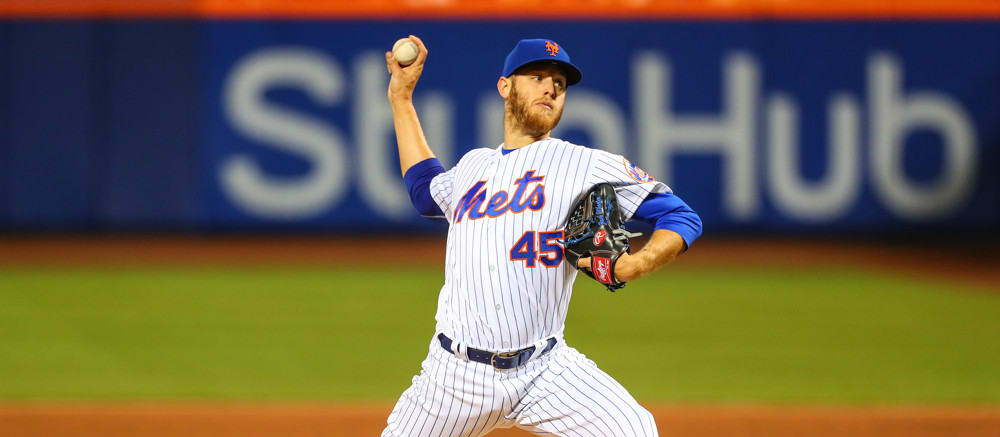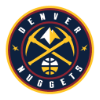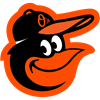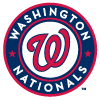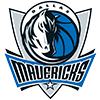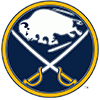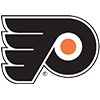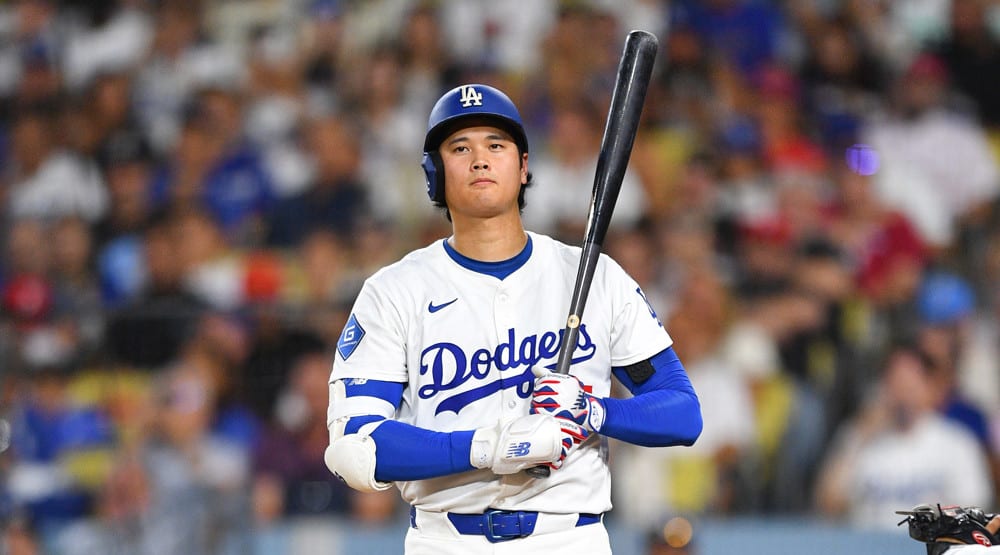
The premise for bold predictions remains the same: they need to be grounded in some form of reality. When I am looking at the numbers behind bold predictions, I am looking at something that is the 10 percent area of likely outcomes for that batter or pitcher. They've either had to do the performance before, or have the hidden metrics in their profile that point to something good or bad about to come. I'm not going out there predicting an MVP award for Russell Martin, but you're damn right I did a victory lap when Christian Yelich won the MVP last year because that was my prediction. In fact, I won a prediction contest against 120 other national baseball writers hosted by Mark Simon of ESPN on the strength of being the only person that had Yelich on his pre-season MVP ballot, and I picked him first. That choice pushed me over the top for the victory.
This year's format will resemble last year in that I will make a hitter and pitcher prediction for each of the 30 teams, giving 60 things to consider before we get into the heavy draft season of March. Please feel free to utilize the comment section below to ask other questions and I'll engage you there as time permits on nights and weekends since I have near-zero daytime availability.
Atlanta Braves (
Adam Duvall hits at least 25 homers. This gets back to that "somewhat based in reality" theme. Duvall hit 33 homers in 2016 and 31 in 2017 before falling off a cliff last year and hitting 15 homers while playing for both Cincinnati and Atlanta. What is bold about this is Duvall is coming off a .195/.274/.365 slash line season where his Isolated Power fell 63 points from 2017 and was 88 points lower than 2016. The .195 average was a 54 point drop from 2017, and he simply looked like a mess at the plate most of the season.
The StatCast data for Duvall tells a story. In 2016, his expected wOBA and actual wOBA were nearly identical, which gave us hope for him repeating his power production in 2017, which he did. However, the quality of contact that fueled that 2017 season was not as good as it was in 2016 and there were reasons to be skeptical of a third consecutive 30-homer season. Last year, Duvall's wOBA fell from .327 in 2017 to .278, but his xwOBA was 33 points above that at .311. That number is not as high as it was when he was hitting 30 homers, but it is much closer than the .278 stinker he posted last year.
His average exit velocity last year was 89.0 mph, which is his highest rate of the past three seasons in which StatCast publishes data. His average launch angle was 22.5 degrees, which is slightly up from the 21.2 in 2017 and the 19.0 measure in 2016. Duvall still hits the ball hard, and he still hits it in the air. His average distance on all batted balls has not changed in three years, but last year's 324 feet of average flyball distance nearly mirrored his 2017 effort, both of which were nine to 10 feet short of the 334 average distance of 2016.
Duvall has historically hit lefties very well, and had 10 of his 31 homers against them in 2017, but had just five homers off southpaws last year with an anemic .189/.286/.351 slash line. It was the first time in three seasons he was not an above average hitter against lefities, so a return to normal form can help bring this bold prediction closer to reality. He has now had two below-average seasons against righties over the past three seasons, and this is the area that will make or break this prediction.
Duvall is slated to hit seventh in the Atlanta lineup, and the club re-signed him to an affordable $3.5M deal to avoid arbitration. Johan Camargo is on the bench and could be a strict platoon partner with him, although Atlanta has professed a desire to utilize Camargo in a Marwin Gonzalez-like role for 2019. If Duvall stumbles out of the gate against righties as he did for most of last season, his salary is an easy release for Atlanta as they are a contender and cannot gift playing time to someone struggling at that level.
Kevin Gausman wins 15 games with a 3.50 ERA. Gausman has never had a season in which he won more games than he lost nor has he had a season with an ERA lower than 3.60. Both of those change in 2019.
Gausman had to languish in Baltimore for most of the last two seasons, pitching in its most unfriendly confines. The shift to Atlanta provided him with a better place in which to pitch most evenings. A look at his in-season numbers with the two clubs shows how he took well took to the changes. He saw his home run rate drop from 1.5 per nine to 0.8 per nine. His home run to flyball ration dropped from 17 percent to 8 percent, and his opponents' batting average dropped from .280 to .225. That last part comes more from him changing teammates than it does ballparks as Baltimore's team defense ranked 28th last year with a minus-94 defensive runs saved rating while Atlanta was fourth in baseball with plus-59 saved.
What encourages me about Gausman are some changes he made once going to Atlanta. Mechanically, he started pitching exclusively from the stretch and ditching the windup. Gausman is reportedly a tinkerer and used three different starts to his windup in 2018. He began the season pitching with his hands in front of his face when he began his windup, then changed to taking his hands back over his head while laying around a hotel room before an April start, and finally deciding to ditch the windup entirely after working with his bullpen coach.
The usage of the windup is more about tradition than anything else. If we think through it, we ask pitchers to master two pre-pitch movements to be successful at their job, but there is not any evidence that the extra machinations of the windup give pitchers any measurable advantage of those who pitch from the stretch. If anything, we see this come to fruition when a pitcher is working on a no-hitter or really on their game in a start. Once a runner reaches base and the pitcher changes pre-pitch deliveries, their command will sometimes waiver as they haven't thrown a pitch from the stretch since perhaps their pre-game bullpen session. More and more pitchers are shelving the windup as they find they are more balanced and have better command out of the stretch, and Gausman appears to be the latest pitcher to join the fun.
Gausman also tinkered with his repertoire in Atlanta, not by adding a new pitch, but changing the frequency in which he used his pitches. Gausman is a three-pitch guy using a fastball, slider and splitter. Below is the game-by-game chart on the frequency in which he used each pitch; all of his August and September starts came with Atlanta:

We see a decline in his fastball usage and a noticeable increase in the usage of his splitter. By run values, Gausman's fastball was -8.5 runs, his slider -1.5, but his splitter was 7.7 runs above average on the season. The table below shows the run values of each pitch between Gausman's time in Baltimore and Atlanta:
| TEAM | wFB | wSL | wSF |
| Baltimore | -12.3 | -2.2 | 2.6 |
| Atlanta | 3.7 | 0.7 | 5.0 |
The change in usage took a good splitter and made it better, while taking a considerably terrible fastball grade and making it better by using it less and tunneling it with the splitter. Gausman went from one above-average pitch to three above-average pitches.
In all, I see many things moving in the right direction for him so he can finally have that breakout season we have all been waiting for since he showed teases of it in 2016. If you have been out on Gausman the last couple of seasons, it is time to get back in.
Miami Marlins (came close last year with Derek Dietrich; whiffed on Drew Steckenrider)
Let's be real; this team is horrendous. The upside is players should get plenty of time to show what they have, but the fact of the matter remains that once the club finally deals J.T. Realmuto, it is mostly void of roster-worthy fantasy talent on both sides of the equation. Sure, Starlin Castro and Brian Anderson still belong on rosters, but that is about where it ends in standard mixed leagues, even with playing time.
Magneuris Sierra steals at least 20 bases. The premise of this prediction if multi-faceted. The roster is jello and most anyone could get knocked out of their job at any time. Sierra does not have a starting role, but that is only one more massive Lewis Brinson slump from happening. Sierra is not even projected for the Opening Day roster at the moment, so this is not a pick I would make for an active roster in an NL-only league, but he will absolutely be on my reserve round wishlist. Sierra has a below average hit tool, no power to speak of, but he can cover a ton of ground and has speed for days. He is graded out as 70 on the 20-80 scale by scouts on his overall speed and only Byron Buxton has a better sprint speed on StatCast than Sierra (30.5 ft/sec vs. 30.2). Yes, Sierra's straight sprint speed exceeds that of Billy Hamilton and Trea Turner.
| PLAYER | SPRINT SPEED (ft/sec) |
| Byron Buxton | 30.5 |
| Roman Quinn | 30.2 |
| Magneuris Sierra | 30.2 |
| Adam Engel | 30.1 |
| Billy Hamilton | 30.1 |
| Trea Turner | 30.1 |
| Delino DeShields Jr. | 30.0 |
| Garrett Hampson | 30.0 |
| Harrison Bader | 29.9 |
| Socrates Brito | 29.9 |
Like Hamilton, Sierra cannot steal first, which is why he has just five steals in a major league career spanning 76 games, but this terrible team presents him with the opportunity to play more than his current skillset would in 28 other markets. Here is our real-life Willie Mays Hays, but I hope he bought 25 pairs of black gloves rather than 100 of them.
Trevor Richards earns at least $5 in NL-Only Leagues. This is going to be tough to do for a team that looks worse than the 2018 Baltimore Orioles did on paper, and may very likely "out-perform" said team in the standings in the race to the bottom. Richards had -$4 overall value last year thanks to a 4-9 record, a 4.42 ERA and a 1.39 WHIP over 126.1 innings. The sexy pick would be to go all in on Sandy Alcantara and his live arm, but I have been burned too many times by guys with straight fastballs who cannot control where the pitch is going and doubles down on his troubles by tipping off his curveball with a different release point. Besides, Alcantara has reliever written all over him, but it is going to take the Marlins at least a year to give up on him as a starter.
Back to Richards. He was up with the club early, but went back to Triple-A until he was called up for good in early June. He made 13 starts in the first half of the season, going 3-5 with a 4.74 ERA, a 1.55 WHIP, with a 9 percent K-BB%, and batters hit .269 against him. He did have a strong 20 percent strikeout rate, but all of the other damage made those strikeouts unrosterable. However, his second half was quite different. He made 12 starts, and although he went 1-4, he had a decent 4.10 ERA, a 1.23 WHIP, a 19 percent K-BB%, and batters hit just .226 against him. He went from being completely unrosterable to usable in NL-only leagues even though he could not buy a win to save his life. The 27 percent strikeout rate after the break was outstanding, but the 1.4 HR/9 coupled with the nine percent walk rate is what kept his ERA over 4.00.
He is still primarily a fastball and changeup guy with a show-me breaking ball that will need to show some of the potential it showed in September for this prediction to come to fruition. He will not overpower hitters, but gets the most out of his stuff and is clearly doing something right to strike out 27 percent of hitters in the second half despite average velocity readings. In NL-Only leagues, someone has to roster Marlins pitchers, so getting Richards early in an auction while others chuckle could be a profitable play.
New York Mets (1 for 2 last year; nailed the Brandon Nimmo prediction, but whiffed with Stephen Matz)
Wilson Ramos hits 25 homers, drives in 90 runs and finishes as top-2 fantasy catcher. Ramos has never hit that many homers in a season nor has he driven in that many runs. I have always been a huge fan of The Buffalo, but landing in New York was an ideal spot for him as a run producer. Look at the average projected on-base percentages of the three guys hitting in front of Ramos for 2019:
•Brandon Nimmo: .373
•Jed Lowrie: .343
•Robinson Cano: .350
There should be plenty of ducks on the pond for Ramos when he comes to the plate, one season removed from a monster 188 wRC+ season with runners in scoring position. That is not a predictive skill, but Ramos has a 141 wRC+ the last three seasons hitting with runners in scoring position. If that trio of hitters stays healthy in front of him, Ramos will have plenty of opportunities to either drive those guys in, or hit into an rally-killing double play. Catcher is mostly a wasteland this year, but give me Ramos at his 136 ADP over Gary Sanchez at 58 any day of the week. StatCast tells us to bake in some regression because he outperformed his contact last year, so hitting higher than .300 for a third time in four seasons could be a challenge, but this should be a big year for run production from Ramos.
Zack Wheeler finishes top 5 in NL Cy Young Voting. Hindsight is 20-20, but when making my Mets' bold prediction last year, I initially had Wheeler down, but chickened out and went with Matz. I'm coming back to Wheeler this year, and I'm repurposing the correct prediction I used on Aaron Nola in 2018. The NL pitching class is still stupid deep, so a lot has to go right for this to happen, but bear with me. Wheeler had the fifth-best fastball among starting pitchers in 2018 by pitch value, trailing only Max Scherzer, Justin Verlander, Gerrit Cole and teammate Jacob deGrom. He closed the season going 9-1 over his last 11 starts with a 1.68 ERA, allowing 46 hits (3 homers) in 75 innings with 73 strikeouts.
His fastball is his primary pitch, and the pitch was in top form last year. His fastball, by opponents' batting average, was back to its rookie form, but the pitch overall was better than it has ever been:
| YEAR | PITCHES | AVG | wOBA | Z-CONTACT% | SWSTR% | pVAL |
| 2013 | 1059 | .236 | .318 | 86 | 7.9 | 7.1 |
| 2014 | 1447 | .263 | .337 | 83 | 8.8 | -1.1 |
| 2017 | 604 | .288 | .354 | 86 | 7.6 | -1.1 |
| 2018 | 1676 | .236 | .285 | 84 | 9.3 | 25.5 |
He now has a ridiculously good late bullpen with both Edwin Diaz and Jeurys Familia working late in games while Robert Gsellman and Seth Lugo help bridge the gap. He is fully recovered from the health woes that caused him to miss nearly three full seasons of pitching in the big leagues and is poised to take another step up from what was a very strong 2018. The expected stats validate Wheeler's 2018 resurgence, so rather than planning for a step back, plan for another step up. He is currently the 36th pitcher off the board in NFBC leagues, but I believe he could finish the year as a top-15 fantasy pitcher.
Philadelphia Phillies (1 for 2 last year as Carlos Santana did not hit 40 homers, but Aaron Nola was a top-5 Cy Young pitcher):
Roman Quinn steals at least 30 bases. This prediction is based off a couple of factors. One, I am already on record stating steals will be up this season and home runs appear to be back on a decline after a ridiculous spike two seasons ago:
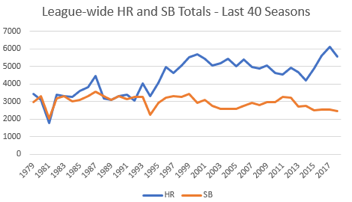
You'll note on that chart that in most years power goes down, speed goes up. That did not happen last season, but that has historically been the case. Quinn is out of options, so he has to make the roster. What he does not have is an everyday spot in the lineup because the starting lineup is deep, but pinch running and spot starts will provide opportunities for him to use his best skill. By StatCast sprint speed, Byron Buxton is the only player in the league faster than Quinn as he is a legit 80 speed runner. He has never stolen more than 32 bases in a professional season, but he has also never had 400 plate appearances in a season. He swiped 29 bags in part-time duty in 2015 with Double-A Reading, and had 23 steals last season in 250 plate appearances between Triple-A and the big leagues. 25 is a more realistic high expectation for Quinn this season, but taking it to 30 to make it bold.
David Robertson finishes as a top 60 pitcher. Robertson's ADP 92 drafts into the NFBC draft season is 95 because it has already been declared he will not be a traditional closer. Robertson has earned at least $10 in single-league formats each of the last five seasons, but I believe he can do that in a mixed-league format this year with a new manager, new situation and new usage. Robertson has pitched between 60 and 70 innings every season of this decade, and rarely have those outings been more than one inning as he has appeared in 60 to 70 games in each one of those seasons.
Last season, we saw him used in a traditional reliever role in New York as a seventh or eighth inning guy getting the baseball to Dellin Betances and Aroldis Chapman, and faced as many as six hitters in a game nine times last year. We know Gabe Kapler loves to use his relievers and that the Philadelphia pen is not as deep as the Yankees pen, which should allow Robertson more time to be out on the mound. He should be in good position to net double-digit saves and double-digit wins with irregular usage patterns late in the game along with a healthy strikeout rate. Double-digit wins and saves have not been accomplished in the same season since Andrew Miller did it in 2016, and before him, it had not happened since Francisco Cordero in 2006. Robertson has not struck out 100 batters since 2011, and has never won as many as 10 games in a season, but a combination of new manager, new utilization rules and coming to the National League for the first time leave him primed for a big year, and a steal at ADP 254.
Washington Nationals (1 for 2 last year as Adam Eaton was one again hurt, but Gio Gonzalez was terrible as predicted)
Matt Adams hits 30 homers. Last year, I applied this prediction to C.J. Cron, and he accomplished the feat with his 30th homer on the final weekend of the season. Like Cron, Adams has never come close to that total as last year's 21 homers were a career high. The problem for Adams is that he has not been able to see more than 370 plate appearances since the 2014 season because of his issues against lefties and his below-average defense. Ideally, he belongs in the American League where he can DH, but he chose to re-sign with the Nationals and will continue his square peg in a round hole career path in the National League. The playing time issue is the linchpin of this prediction because it will be tough for Adams to find at bats in the outfield with Adam Eaton, Juan Soto and (currently) Victor Robles playing most days with Michael Taylor as a prime sub.
Adams is essentially an insurance policy for Ryan Zimmerman's aging back, which has not allowed him to play in 150 games since 2009. Zimmerman raked in 2017, but started slowly last year with back troubles, and then eventually got hot again. He has played in fewer than 100 games in three of the last five seasons, so there is a very real chance something happens again with him. Enter Adams, whose pull-heavy flyball approach hit 20 homers against righties last year in fewer than 300 plate appearances.
Adams hits the ball hard, and his 7.2 barrels as a percentage of his overall plate appearances was higher than the likes of Rhys Hoskins, Travis Shaw and Stephen Piscotty last year. The point of this prediction is to force you to take a deeper look at Adams late in drafts as you look for reserve power as his ADP is 550. Unless something changes in the next six weeks, Adams is not worth an active roster spot in anything but the deepest of NL leagues, but he should not last long in the reserve rounds with 20 homers as a rather safe floor with upside for more.
Sean Doolittle is a top-3 reliever by R$. Our rankings have Doolittle as the 11th closer on the board, but I am more aggressive. The risks with Doolittle have nothing to do with his skills and more to do with health as he has not pitched more than 55 innings since the 2014 season. He has missed at least 60 days of service in two of the last three seasons due to injury, most of which has been shoulder related, though last year was all about a toe problem.
The last three seasons, he has had improving strikeout rates, elite walk rates and has been tougher and tougher to hit. Last year, he was elite when he did pitch, though it will be nearly impossible to repeat last year's rates . That said, even his .202 expected wOBA last year was still the best in baseball.
Doolittle had a 33 percent K-BB% figure last season, and only Josh Hader and Edwin Diaz topped that (min 45 IP). Diaz has a current ADP of 48, Hader is at 102, and Doolittle is at 109. Diaz did not exactly come out of nowhere in 2018, but the jump from 34 to 57 saves and a step up from already solid skills did. Doolittle is already there skills-wise, so a healthy season could lead to a similar surge forward in saves for him. 40 saves with these skills is much better than the 11th closer on the board.


